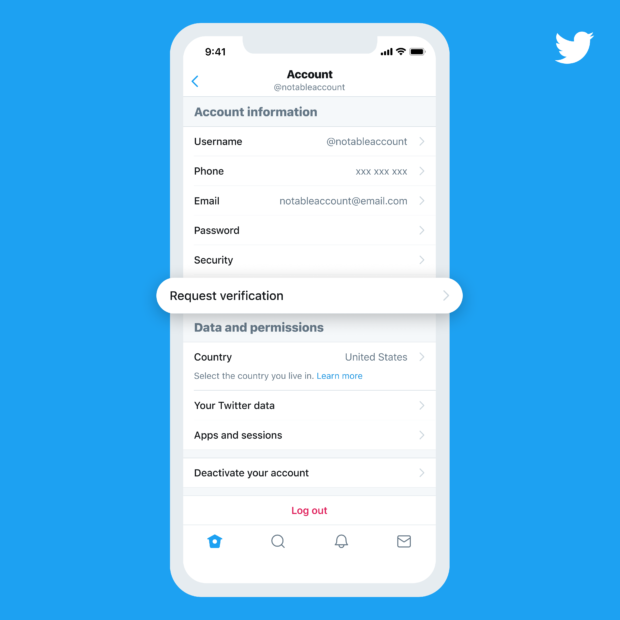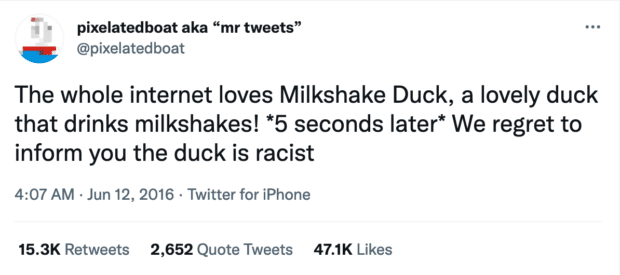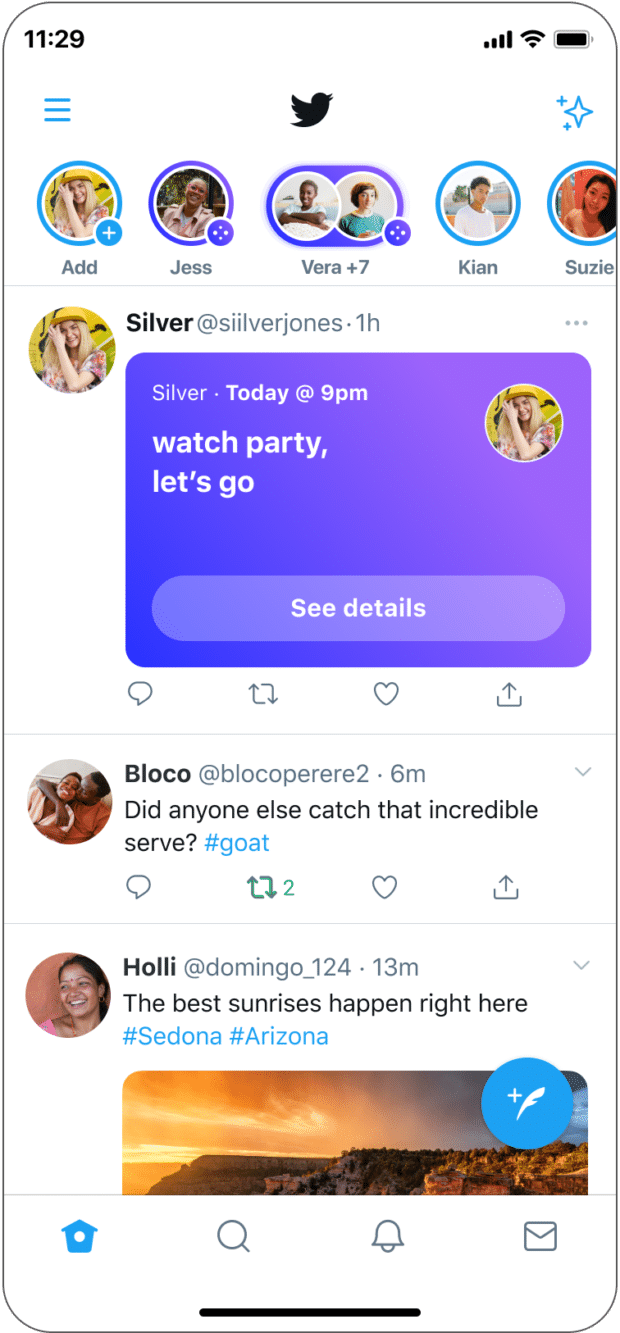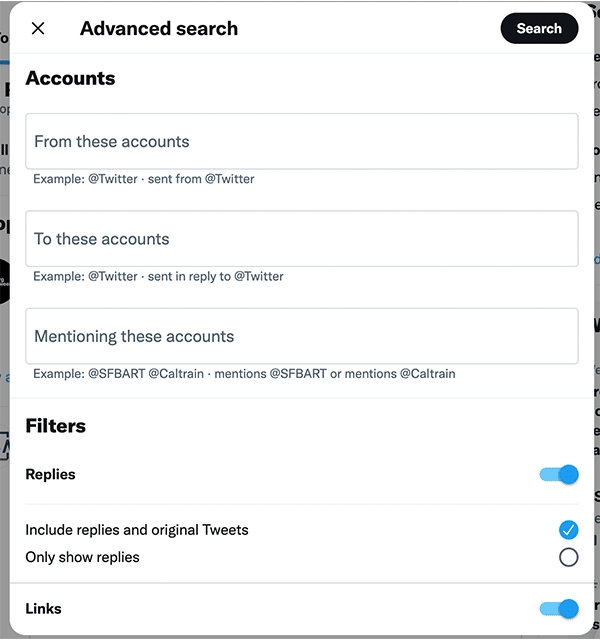Since its launch in 2006, Twitter has gone from a punchline about sharing what you ate for lunch with the world to an unavoidable part of online communication.
And Twitter’s reach is only growing. In Q3 of 2020, Twitter boasted 187 million monetizable daily active users, a 29% increase over the previous year.
In this post, you’ll learn how to make Twitter work for your business. We’ll cover the basics to get you set up and more advanced tips to optimize your investment in your Twitter presence.
Bonus: Download the free 30-day plan to grow your Twitter following fast, a daily workbook that will help you establish a Twitter marketing routine and track your growth, so you can show your boss real results after one month.
Why use Twitter for business?
In an increasingly crowded social media landscape, there are many reasons to make Twitter a part of your organization’s social media plan.
Advertising on Twitter is especially attractive because the platform punches above its weight in terms of reach. The total number of people going on Twitter every month is nearly three times larger than the number of registered users.
Source: Hootsuite
This means that you’re not just reaching Twitter users when you tweet. You’re also reaching a wider audience of non-members who also read Twitter.
How to use Twitter (for beginners)
If you’re totally new to Twitter, the first steps are the same whether you’re creating an account for business or personal use.
Even if you already have an account, using these tips will keep your fundamentals strong.
Create a profile
The first step in using Twitter effectively for your business is to create a profile.
Your profile includes the following four elements:
- Profile and header photos
- Display name and account @name
- Bio
- Pinned Tweet
Source: Twitter
The profile photo represents your account everywhere on Twitter. It should be recognizable and shouldn’t change too often. Most companies include their logo in their profile image.
Your header photo can change more often, since it’s less important to your account’s identity. This is where you can share the latest updates in a visually striking format.
Your @name is the name of your account. It doesn’t change. You can change your display name, but it’s best to set it as your organization’s name and leave it at that.
Your bio is your brand’s elevator pitch. Writing a good Twitter bio is an art in its own right. Just don’t forget to include a link to your website.
A pinned Tweet is the first piece of content users see when coming across your profile. It isn’t required, but it’s a great place to highlight ongoing sales or promotions, a new product launch, or a cause you support.
Learn Twitter terminology
We may all know what a Tweet is by now, but it pays to familiarize yourself with some Twitter-specific vocabulary.
- A hashtag is a word or phrase preceded by the pound symbol. It signals that a piece of content relates to a specific topic or belongs to a category.
- A mention is any Tweet that contains the @ symbol followed by another person or brand’s username. You’ll want to monitor them to see what others are saying about you.
- When an account shares another account’s Tweet, this is a retweet.
- A quote Tweet is like a retweet, but with an added comment about the original Tweet.
- Direct messages (DMs) are private messages between Twitter accounts. DMs from accounts you don’t follow appear in your Requests folder by default. Don’t forget to change this setting if you want to use DMs to interact with your customers.
- Topics are subject headings that accounts can follow. When you follow a topic, you’ll automatically see content associated with that subject.
Follow other accounts
There’s no social media without social. One of the best ways to get Twitter followers of your own is to follow other accounts with similar interests.
Following established accounts can inspire you when you’re new to Twitter. And interacting with them can help attract your own following.
Apply for Twitter verification
Getting that blue check next to your account name increases the trust users put in your business. If you’re already verified on Instagram, the process will be familiar.
You must apply to verify your account. The process is somewhat stricter as of 2021, but businesses remain one of the categories eligible for verification.
Source: Twitter
Learn more about the process of getting verified on Twitter in our essential guide to Twitter verification.
How to use Twitter for business
Once you have the basics down, it’s time to start thinking about what Twitter can do for your business.
The tips in this section will help you turn your Twitter activity into growth for your business.
Create a Twitter marketing strategy
If tweeting is part of your business, treat it like one. A Twitter marketing strategy for your brand will help you articulate your Twitter goals and plan how to achieve them.
A successful Twitter marketing strategy will also be a part of an overall social media marketing strategy. Having a global view of your social media marketing will allow you to take advantage of each platform’s specific strengths.
Find your brand’s voice
Twitter is littered with the graves of accounts that didn’t think before tweeting. It pays to take some time to plan your brand’s voice on the platform.
Source: @pixelatedboat
Don’t be like Milkshake Duck; think before you tweet.
Having a consistent voice on social media makes it easier to connect with your audience. It also helps your brand stand out among the businesses fighting a share of the 1.9 billion hours that users spend on Twitter each month.
Learn how to use Twitter Lists
Once you get active on Twitter and your feed starts to fill up, Twitter Lists can reduce the noise by organizing your feed into targeted topics.
Making a Twitter List is like making a custom timeline that only contains content from the accounts you choose.
https://www.youtube.com/watch?v=YDh-WSYIWds
There are a variety of topics you might want to make a List about for your business. You can use them to keep track of partners, competitors, or the accounts that engage with you the most.
Use Twitter Spaces to engage with your audience in real time
Twitter Spaces is a new feature that allows you to host live audio conversations with other users.
Source: Twitter Help Center
With Spaces integrated into the Twitter platform, it’s easy to get the word out about your audio events. Joining is as easy as clicking a link in a Tweet.
Announcing your Spaces chat with a Tweet lets you leverage the reach of your existing Twitter brand into engagement on Spaces.
Use Twitter ads to promote your content
Twitter’s 353 million users are a big part of what makes it an attractive platform for brands. But the volume of content posted to Twitter every day can also mean that your brand’s Tweets get lost in the fray.
Twitter advertising is the answer to this problem. You can promote anything from a single Tweet to an entire account.
With no minimum budget, there’s a Twitter advertising option that will help any brand get noticed.
Harness the power of Twitter’s advanced search
With some 7,000 Tweets per minute just about TV and movies, Twitter’s normal search bar usually isn’t enough to find the content you’re looking for.
Twitter’s advanced search is a more powerful tool for sifting through Tweets, with many functions to help promote your brand.
Source: Twitter Business
You can search by account mentions to find users who are engaging with you. Engagement filters allow you to find the most popular Tweets about a topic.
Understand your performance with Twitter Analytics
Twitter Analytics is a robust platform that uses graphs and reports to provide insights into your Twitter activity.
This tool provides data on everything from your top Tweet to ad conversion rates.
Knowing how to use Twitter Analytics provides many advantages for your business. You can use it to determine the days and times your audience is most active or analyze your ads’ return on investment.
Learn how to use the Twitter API
The Twitter API (automated programming interface) allows you to make programs that interact directly with Twitter.
There are many ways that this tool can help your business. You can create your own filters to get real-time data on only the most relevant Tweets or create custom audiences.
Not everyone with a Twitter account has access to the API. To use it, you first have to apply for a developer account.
Using Twitter for business: 9 best practices
A Tweet is a 280-character blank canvas. It isn’t always easy to know how to communicate your brand’s message on Twitter.
These 9 best practices will provide you with guidelines for making Twitter content that gets results.
1. Keep it short
Simple, clear messages are the best way to get your point across on Twitter. The 280 characters are a limit, not a goal.
2. Write organically
Twitter users respond to brands that don’t sound like brands. In fact, the most-engaged-with Tweets are usually those that don’t contain links.
What’s more, the engagement you generate from Tweets without CTAs or links will also improve the engagement on your Tweets that do contain those elements.
3. Engage in conversations
If you’re just broadcasting out into the Twitterverse, it’s easy for your audience to tune you out.
And you don’t want a passive audience. The more engagement you get, the more visible you are.
Start conversations by using quote Tweets or tagging other accounts. You can also run a poll to turn your Twitter communication into a two-way street.
If you want to go further in learning how to connect with your Twitter followers, consider taking a course on building your Twitter community.
4. Don’t forget CTAs entirely
It’s important to build your business’s Twitter community, but that community isn’t an end in itself. The traditional best practices of ad copy still apply on Twitter. And knowing how to write a good CTA never goes out of style.
Good business Twitter use strikes a balance between conversational Tweets and advertorial content.
An extreme example of this balancing act is the Philadelphia Flyers hockey team’s Twitter activity. Their mascot’s account, @GrittyNHL, posts almost exclusively organic, conversational content.
Source: @GrittyNHL
Their team account, @NHLFlyers, on the other hand, tweets more like you’d expect a business to.
Source: @NHLFlyers
5. Tweet with emojis
Using emoji in your Tweets conveys emotion and does it concisely, two qualities that Twitter users love.
Knowing how to use Twitter emojis properly will improve your brand’s visibility on Twitter. In fact, Tweets with emojis generate more engagement than those without!
6. Use trending hashtags
Hashtags cut through the noise of Twitter to get your Tweets seen by people who are interested in a specific topic.
But there’s more to knowing how to use hashtags on Twitter than just adding a #pound #sign to some #words. You can do better than this:
Source: @coffee_dad
Use Twitter’s advanced search to find popular existing hashtags you can use.
You can also create a branded hashtag to start a conversation about topics close to your business’s identity. It will build brand awareness every time someone uses it.
7. Tweet with visuals
Twitter is mostly a text-based environment. So images and videos stand out more there than on platforms like Instagram, where they’re just one visual in a feed.
Tweets that include a visual element (an image or a video) generate more engagement than those that don’t. Tweets with an animated gif, for example, generated 55% more engagement than gifless Tweets.
8. Know when to tweet
Recency is one of the most important factors in determining which Tweets get seen. So don’t waste your perfectly crafted content by tweeting it when no one’s around to see it.
In general, the best time to post on Twitter is 8 a.m. on Mondays, but that might not be the best time for your company.
Use Twitter Analytics to track when your Tweets get the most engagement, or use a social media analytics platform like Hootsuite to find out what times have the best ROI without crunching any numbers yourself.
https://www.youtube.com/watch?v=tNzqsuIl3H4
9. Know how often to tweet
Knowing how to pace your Twitter use is a delicate balance. Tweet too little, and users forget about you. Tweet too much, and they get annoyed and ignore you.
In most cases, it’s best to tweet more than one or two and fewer than three to five times per day.
There are several ways to schedule your Tweets so that they come out at the right frequency. Twitter has a built-in scheduling feature. You can also use a social media management tool like Hootsuite to schedule your Tweets as a part of a complete social media calendar.
Manage your Twitter presence alongside your other social channels and save time using Hootsuite. From a single dashboard, you can schedule and publish posts, engage your audience, and measure performance. Try it free today.
Do it better with Hootsuite, the all-in-one social media tool. Stay on top of things, grow, and beat the competition.
Free 30-Day Trial












